Elections Primer 2022
An Essential Guide to Elections and Advocacy
Making the Case for Museums, Galleries, and Cultural Centres in your Community
Updated in September 2022
About this Guide
Thank you to the BCMA Advocacy Committee for the time and expertise provided to create this document. The Advocacy Committee is committed to supporting the advocacy work of the BCMA and its members and increasing awareness of the BC cultural sector.
As communities across the province continue to focus on recovering from the COVID-19 pandemic, advocacy is more important than ever. The 2022 BC local government elections are a critical opportunity to tell the story of the impact of our sector and to urge governments across the province to take action to ensure museums, galleries, and cultural centres can continue to support their communities. This primer is meant to provide our members with facts, tips, and strategies to make arts, culture, and heritage a central issue now and in future elections.
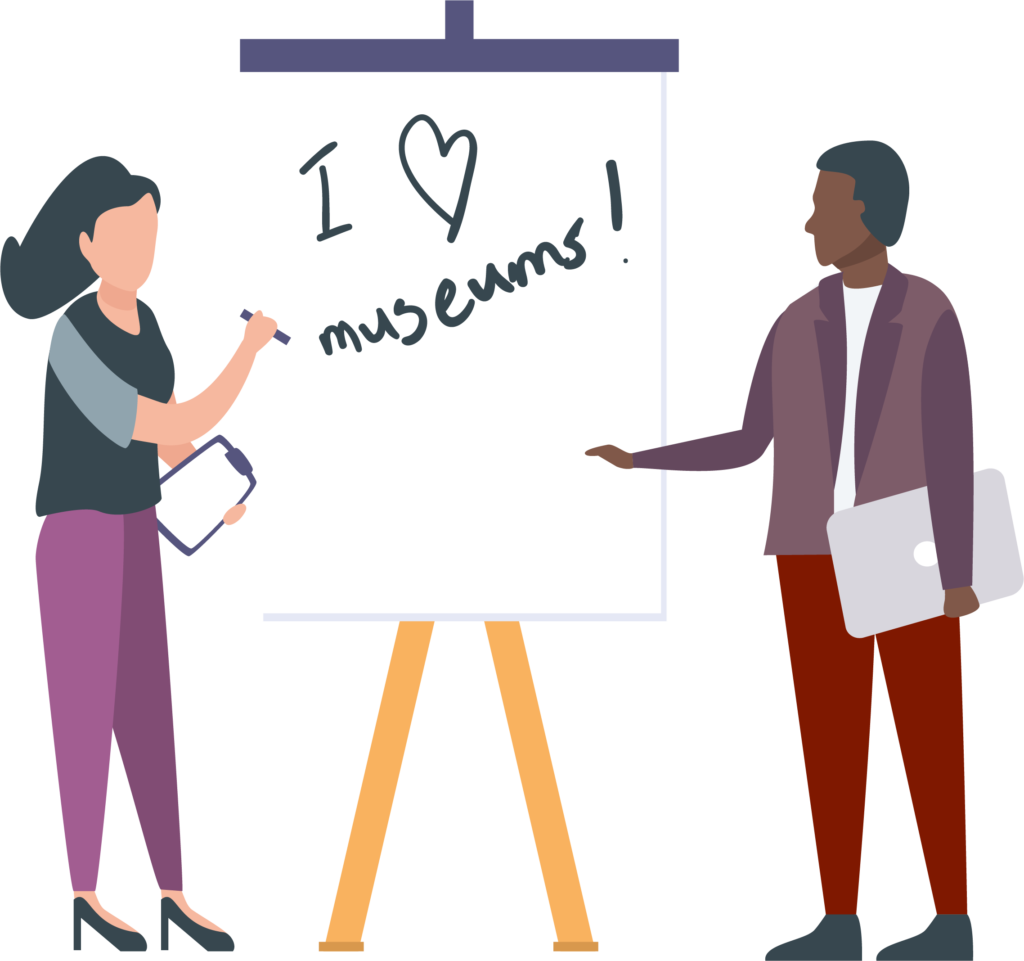
The BC Museums Association advocates for museums, galleries, and heritage organizations during and after this election and with all levels of government on an ongoing basis. We ask all BCMA members to engage with their local representatives and help us make sure that support for museums, art galleries, and cultural centres is an election issue and an ongoing priority for elected officials in your communities. Increasing awareness about the value and impact of museums, culture, and heritage among decision-makers like elected officials, as well as the general public, is critical to the growth and development of our sector. We need to be strong advocates for the economic, social and cultural impacts of our work – from generating economic returns and tourism revenue to building community participation and connections between generations, supporting local justice, equity, diversity, and inclusion initiatives, and giving children, youth, and seniors access to arts and culture.
We understand that members are under-resourced and over-burdened, now more than ever, but advocacy on a local level is critical. We must ensure that every council member, MLA, senior government official, and voter knows the impact museums, galleries, and cultural centres have on the lives of British Columbians.
Now is the time to speak together with a unified voice!
Important Dates
- BC general local government elections: October 15, 2022
- BC provincial election: TBD 2024
- Federal election: TBD (potentially 2025)

Political activities
Protecting your charitable status: Canada Revenue Agency (CRA) has updated rules and guidelines that charitable organizations must follow. Be sure to read up on the rules and regulations that govern charities, non-profits and individuals under the “Public policy dialogue and development activities by charities” section of the CRA website. It is important to know that while charities are prohibited from directly or indirectly supporting or opposing a political party or candidate, charities can engage in advocacy and public policy dialogue.
Changes to the Lobbyist Transparency Act and Implications for the Non-profit Sector: Since the 2017 provincial election, new regulations have been established to increase transparency with respect to who is lobbying the BC government. Pacific Legal Education & Outreach Society has a free webinar recording and resources that outline these changes. We encourage members to review these changes before engaging in advocacy work, especially if you are engaging in advocacy as a paid staff person, representing your organization.
Please note: this legislation applies only to advocacy/lobbying of provincial government officials in British Columbia, not to local government or federal advocacy.
About the BCMA
Founded in 1957, the British Columbia Museums Association (BCMA) creates a bright future for British Columbia’s museum, gallery, and related heritage communities through networking, advocacy, innovation, and professional development. Since our founding, the BCMA has grown to include more than 450 members in every corner of the province representing museums, art galleries, science centres, Indigenous cultural organizations, heritage sites, botanical and zoological gardens, cultural centres, conservation institutes, exhibition galleries permanently maintained by libraries and archives, and nature reserves.
While BCMA makes every effort to present accurate and reliable information, the information provided in this document is “as is” without any warranty of accuracy, reliability, or otherwise, either express or implied. Users of this primer should not in any manner rely upon or construe the information or resource materials in this primer as legal, or other.
Facts Supporting Why Museums Matter
 Two critical tools in advocacy are quantitative data (i.e. facts, figures, and statistics showing the impact of your organization or sector) and qualitative date (i.e. human stories of the impact of your organization or sector). When telling the story of your organization’s impact, we recommend using both quantitative and qualitative data.
Two critical tools in advocacy are quantitative data (i.e. facts, figures, and statistics showing the impact of your organization or sector) and qualitative date (i.e. human stories of the impact of your organization or sector). When telling the story of your organization’s impact, we recommend using both quantitative and qualitative data.
For example, you can say that “85% of Canadians believe that arts education assists in the emotional and intellectual development of children and consider it a good reason to support the arts.”
But if you can also follow that statistic up with a story from your museum about the impact your organization has had on the life of an individual child, your story will be richer and more memorable. Statistics are important, but stories stick in people’s heads and hearts.
Here are some helpful statistics to quantify the impact of museums, galleries, and cultural centres.
The Ongoing Impact of COVID-19 on BC’s Cultural Sector
Despite the collective efforts of British Columbians to end the pandemic, it is increasingly clear that the pandemic is not yet over and there is no end in sight for the lingering impacts of the pandemic on the arts, culture, and heritage sector. The past 2+ years have been among the most challenging times our sector has ever encountered – from new COVID variants, to economic downturns, to numerous unprecedented climate emergencies, to repeated closures, to nationwide supply chain disruptions, to the horrifying confirmations of the deadly legacy of residential schools, to severe increases in inflation. Many in our sector have been forced to repeatedly close and open our doors, have had to completely rewrite well-established business plans, and have been unable to present creative works to their local communities. All in all, our sector has been forced to quickly and repeatedly pivot, adapt, and grow in order to respond to the ever-evolving needs of our communities.
Statistics about the impact of COVID-19 on the arts, culture, and heritage sector:
- In April 2020, 94.7% of all museums in the world were closed due to the pandemic.
- A 2020 joint survey from the BCMA and Heritage BC has found that nearly 33% of heritage organizations in British Columbia fear they “may never fully recover or completely return” to normal after COVID-19.
- A 2021 survey from the Greater Vancouver Professional Theatre Alliance found that 96% of cultural workers in the province are experiencing higher rates of stress and anxiety due to COVID-19.
- In 2020 85% of respondents to a BCMA and Heritage BC survey stated that they reduced programs and services offered to the public due to the pandemic.
- As of Fall 2021, only 52% of individual cultural workers in BC reported feeling confident that they will still be working in the sector in the next 18 months, signalling that pandemic burnout and funding scarcity are causing people to leave the sector.

Because museums and cultural organizations hold collections in the public trust, the risk of widespread closures goes beyond the economic and social impact of jobs lost. It is a threat to the very fabric of our heritage. BC museums hold nearly 12 million objects in the public trust. If one in three museums were forced to close, 3.6 million objects would be at risk. With limited collections storage space across the province, the museum sector has little to no ability to safely re-house even a fraction of these objects. This will undoubtedly lead to irreplaceable pieces of Canada’s heritage being destroyed, lost, or moved into private collections.
While this would be a tremendous loss for all Canadians, the impact would be truly devastating for Indigenous communities who have spent decades researching and locating their cultural patrimony and working to bring it back home. If millions of heritage objects are moved, let alone lost, due to the widespread closure of museums, this would set back the repatriation work of Indigenous communities by decades.
Economic Impact
Each $1 invested in the cultural sector (a sector in which museums play a large part, but that also includes the arts), provides a $4 return on investment: creating jobs, building infrastructure, attracting tourism, and making our communities richer, more enjoyable places to live. While museums offer society considerably more than a return on investment, from a purely economic standpoint, investing in museums makes sense.
In British Columbia, the cultural sector is a massive economic driver and despite BC investing less in culture than other provinces for
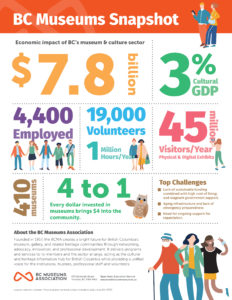
decades, culture creates more jobs in BC than in any other province. The economic impact of the cultural sector in BC is $7.9 billion, larger than the impact of agriculture, forestry, fishing, and hunting ($5.8 billion) and utilities ($6.3 billion); and similar to that of accommodation and food services ($8.0 billion) and mining, quarrying, and oil and gas extraction ($8.2 billion). The economic impact of the cultural sector is six times larger than the economic impact of the sports sector in BC. Museums are vital to the health of BC’s tourism sector, with nearly 70% of all tourists in BC choosing to visit a museum, gallery or cultural organization on their trip.
There are 88,000 culture jobs in BC, which is equal to 3.8% of all jobs in the province.
Culture GDP in British Columbia is 6.33 times that of sport and culture creates 4.31 times more jobs than sport (Statistics Canada 2015). The GDP contributed by culture is greater than agriculture, forestry, fishing & hunting, utilities, and accommodation & food services industries.
Through creative innovation, the culture sector can diversify BC’s predominantly resource-based economy.
A strong culture sector gives British Columbian communities a brand, or “attraction factor,” for new workers, residents, and tourists, spurring and supporting a vibrant cultural tourism industry.
Culture contributes to urban and rural development and revitalization, enhancing communities and providing further opportunities for economic and social growth.
Educational Impact
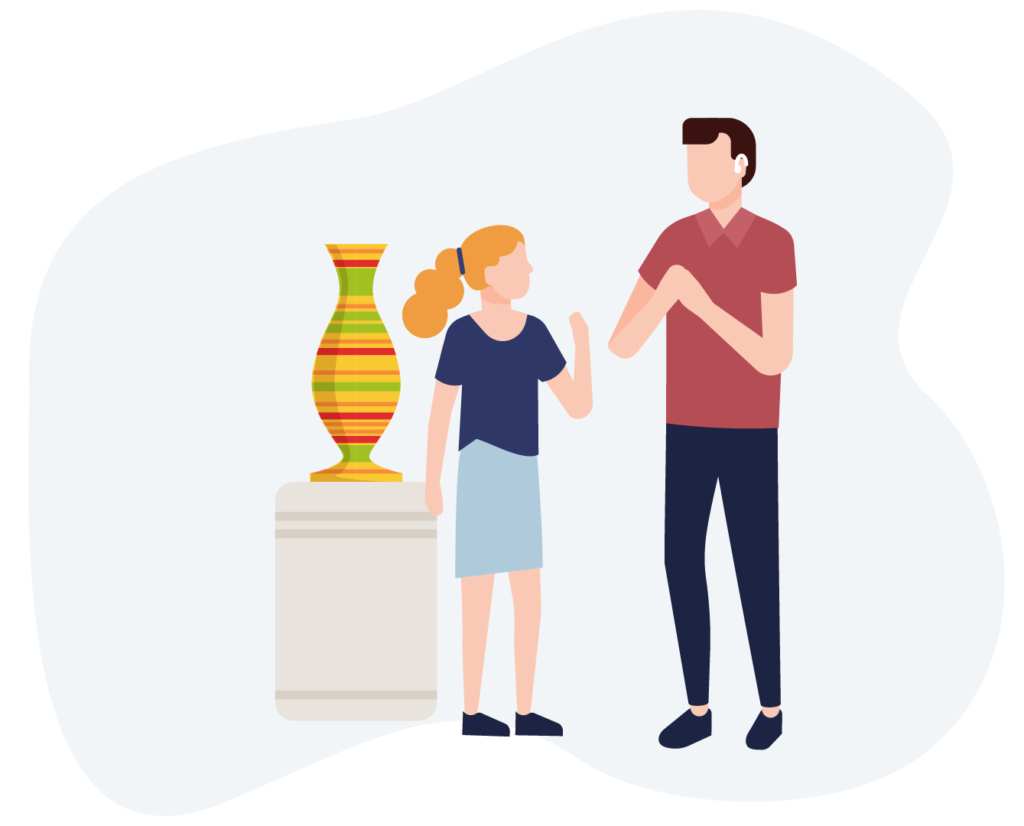 Museums, galleries, and cultural centres function as an essential “third space” (spaces that are neither work nor home) in communities and are hubs for exploring history, heritage, and culture.
Museums, galleries, and cultural centres function as an essential “third space” (spaces that are neither work nor home) in communities and are hubs for exploring history, heritage, and culture.
Since the COVID-19, museums and cultural organizations across BC have created more than 1,000 new online educational programs to respond to community needs.
A recent survey found that 89% of Canadians trust science centres and museums for science-related information. In an era of fake news and online misinformation, museums play an essential role in helping communities understand important issues.
Across Canada, school groups visiting heritage institutions reached over 127,280 (approximately 6.4 million visits by students); up 7% over 2015.
Across Canada, heritage institutions responded to over 1.1 million research requests in 2019.
If you’re interested in seeing how museums, galleries, and heritage organizations are using technology to reach new educational audiences, check out the VR Voyage Classroom – a partnership between tech start-up Forager Education and the BCMA!
Social and Cultural Impacts
British Columbians are “avid cultural participants,” engaging in arts and cultural activities more than other Canadians.
Canadians volunteered 107 million hours for arts and culture organizations in 2013. This is the equivalent of about 56,000 full-time, full-year jobs.
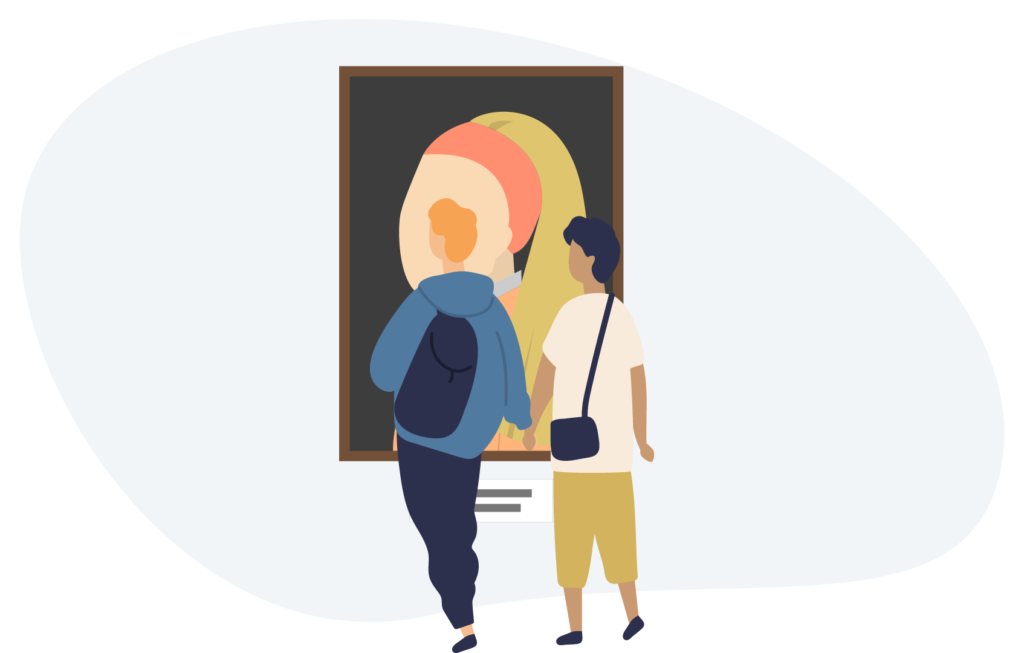
Cultural spaces create a symbolic sense of place. More than eight in ten Canadians feel that these spaces foster a sense of community pride and contribute to the quality of life in their community.
Culture is a spark for reconciliation between Indigenous and non-Indigenous communities. As a powerful avenue for sharing the truth of our history, it creates a process for fostering understanding, respect, and meaningful relationships moving forward.
Arts have been shown to empower youth, especially at-risk youth, to succeed in school, in work and in later life – 85% of Canadians believe that arts education assists in the emotional and intellectual development of children and consider it a good reason to support the arts.
People who attend arts activities have been shown to be significantly healthier, have lower anxiety and be less likely to experience depression – this is especially important during COVID-19, as Canadians are reporting higher than normal levels of stress and anxiety.
What Museums Need: Points for BCMA Members & Politicians in their Communities
Increased investment in museums, art galleries and cultural centres will increase the economic and social impact of arts and culture in communities. Here are a few ways politicians and cultural champions can support our sector:
Local Government Priorities:
- Stable operational funding is essential to the long-term health of the cultural sector. Advocate for more funding for core operations and programming. Stable operational funding allows museums to invest in community impact, create jobs, and prioritize fundraising efforts to support overdue infrastructure investment rather than constantly struggling just to keep the lights on.
- Advocate for more funding for capital projects and/or facility improvements. Cultural organizations are at the vanguard of helping to create greener communities and capital/infrastructure funding can help to make organizations more resilient and more sustainable.
- Adopt a “percent for art” program that increases the presence of art in public spaces for all capital development projects.
- Fund emergency preparedness and green infrastructure programs to empower museums and heritage spaces to adapt and prepare for the effects of climate change and climate-related emergencies.
- Ensure that museums, galleries, and heritage sites are given a voice in your community’s tourism strategy.
Provincial Government Priorities:
- Repatriation of ancestors and cultural belongings is an essential first step in reconciliation, governments must allocate regular funding and support for Indigenous communities to repatriate their cultural property.
- Advocate for more funding for capital projects and/or facility improvements. Cultural organizations are at the vanguard of helping to create greener communities and capital/infrastructure funding can help to make organizations more resilient and more sustainable.
- Support the leading role of museums, art galleries, cultural centres and historic sites in strengthening BC’s national and international profile.
- Fund emergency preparedness and green infrastructure programs to empower museums and heritage spaces to adapt and prepare for the effects of climate change and climate-related emergencies.
- In 2017 the Province of BC committed to double the BC Arts Council’s budget, while this budget has been increased, the Province has not yet fulfilled this commitment.
- Encourage the Province of BC to allocate funding to support arts, culture, and heritage organizations in transformative work towards equity and diversity.
Federal Government Priorities:
- Repatriation of ancestors and cultural belongings is an essential first step in reconciliation, governments must allocate regular funding and support for Indigenous communities to repatriate their cultural property
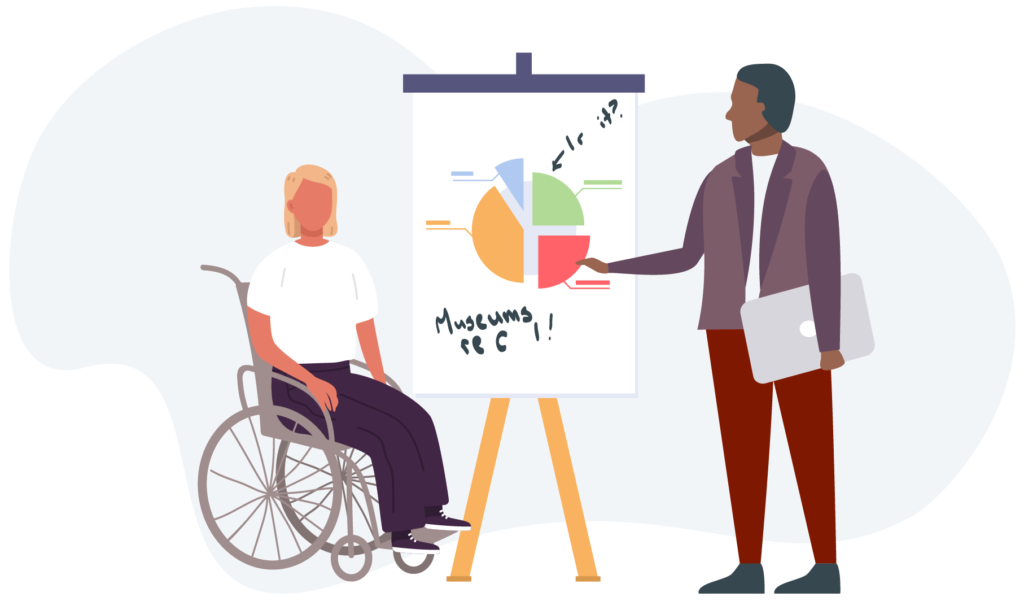
- Canada’s national museum policy hasn’t been updated in nearly 30 years – it is critical that the Federal Government update this policy and use it as an opportunity to create a bright, sustainable, and just future for the museum sector.
- Advocate for more funding for capital projects and/or facility improvements. Cultural organizations are at the vanguard of helping to create greener communities and capital/infrastructure funding can help to make organizations more resilient and more sustainable.
- Support the leading role of museums, art galleries, cultural centres and historic sites in strengthening BC’s national and international profile.
- Fund emergency preparedness and green infrastructure programs to empower museums and heritage spaces to adapt and prepare for the effects of climate change and climate-related emergencies.
What Can You Do?
Knowing who your candidates are, what they stand for and their intentions for arts and culture is instrumental when deciding who to vote for. As your direct link to government, the winning candidate in your riding can fight for key issues and increase the importance of arts and culture in government decision-making.
Nominations for local government candidates are ongoing and pre-elections campaigning can begin on July 18th. Visit Elections BC’s website for the most up-to-date information about candidates in your area.
Find out who is running for elected office in your community. Contact your local candidates and ask them if they support museums, art galleries and cultural centres. If elected, what would they do to support museums, art galleries, cultural centres and historic sites? Attend all-candidates meetings and ask questions that relate directly to our sector and the parties’ vision for the arts. Follow candidates in the news and on social media to keep in touch with what they are up to. Connect with candidates and make the case for arts and culture at any opportunity that arises. Let them know why they should care about our sector.
Make sure support for museums, art galleries, and cultural centres is an election topic in your community.
Stay connected with your sector and make sure you take part in letter-writing campaigns, sharing advocacy information on social media, and sharing news through your personal/organizational networks.
If you have strong connections with local media (newspapers, bloggers/influencers, television, radio), pitch stories about the importance of cultural organizations and make sure they understand that cultural funding is a key election issue.
After the Election
Build relationships with local, provincial, and federal elected officials and policymakers.
Advocate with your local representatives to increase funding to museums, galleries, and cultural heritage institutions.
Work with governments on policy and legislative changes to help strengthen the museums, heritage, and cultural sector.
Increase awareness about the value and impact of the museums, gallery, heritage and culture sector among decision-makers like elected officials by inviting them to key events at your institution (special anniversary celebrations, Family Day events, exhibit openings, etc.)
Work with governments and stakeholders to increase training and professional development opportunities for the sector.
Build coalitions with other organizations (e.g. BCMA members, arts, culture and heritage stakeholders) to advocate for shared issues.

Advocacy Resources
Visit the Advocacy portal on the BCMA BRAIN for the latest, up-to-date resources to expand your advocacy toolkit.
BCMA regularly publishes advocacy news and updates to help our members and stakeholders stay informed about new policies, statistics and opportunities to advocate for museums and culture. We recommend reading the following resources:
Making the case for your museum
First, watch BCMA’s webinar “Making the case for your museum: Advocacy strategies that work!” This hour-long webinar shares tools, tips and actions for building relationships with elected officials and increasing your organization’s effectiveness in advocacy.
Here are additional resources to assist with advocacy on the municipal, provincial and federal levels. Get in touch and let us know if there are other resources you would like to share or request.
How to build successful partnerships with local governments
Watch this special webinar from the 2022 BCMA & Heritage BC Joint Conference and explore strategies for building successful partnerships with local governments.
Why Museum Funding Matters
Museums provide a proven return on investment and cultural spending makes dollars as well as sense.
Reports and Statistics
Looking for data about museums? Check out the BCMA’s reports and statistics portal.
Why Culture Matters in British Columbia
A helpful overview from the BC Alliance for Arts and Culture about the benefits in general of arts, culture and heritage; and specifically on the benefits of increased public funding as related to the provincial government’s promise to double BC Arts Council funding.
Research, reports and additional resources
- Economic Impact Report and Case Studies (BCMA and Heritage BC, 2020)
- The Standing Committee on Canadian Heritage released a major report on the State of Canadian Museums (September 2018). The Government’s response was issued in January 2019.
- Government of Canada Survey of Heritage Institutions (2017): A survey and analysis of financial and operating data from 1,820 heritage institutions and sites (museums, art galleries, historic sites, etc).
- Hill Strategies: Arts and culture research reports on topics like Canadian public participation in arts, culture and heritage
- The American Alliance of Museums’ Top Ten Rules for Advocacy Engagement can be found here
- The American Alliance of Museums also has free advocacy webinars:
- ICOM has laid out 6 Advocacy Steps that can be found here
- ICOM has also created a Culture and Local Development: Maximizing the Impact guide
- The Small Museum Association has put together an Advocacy 101 document for small museums
